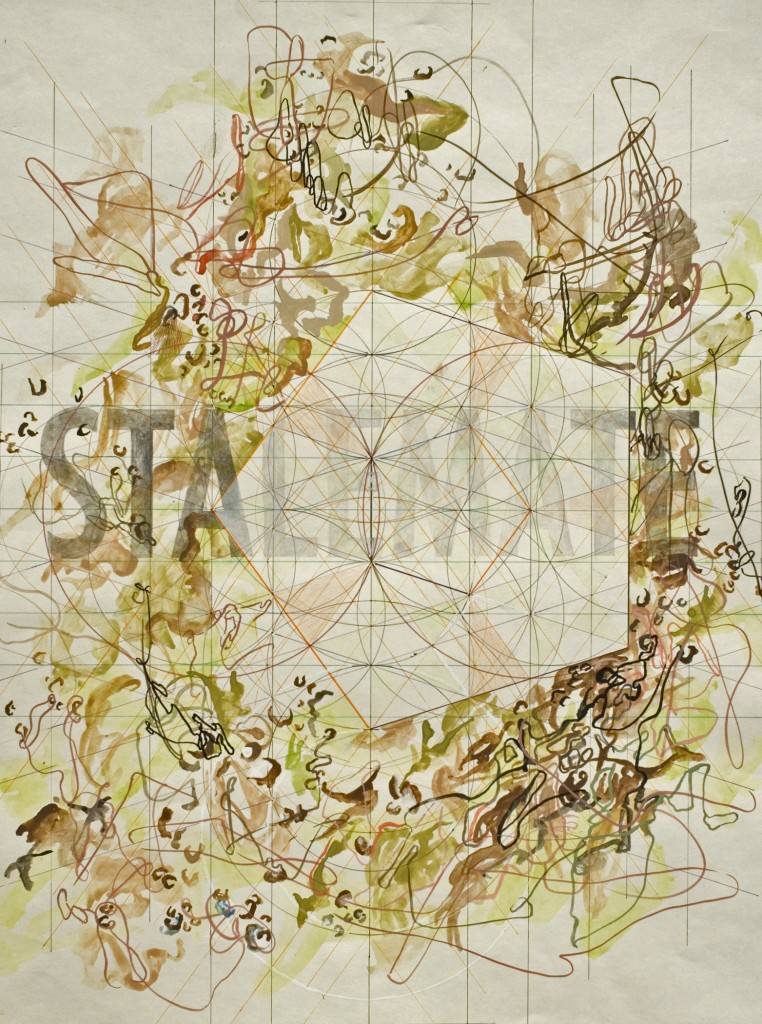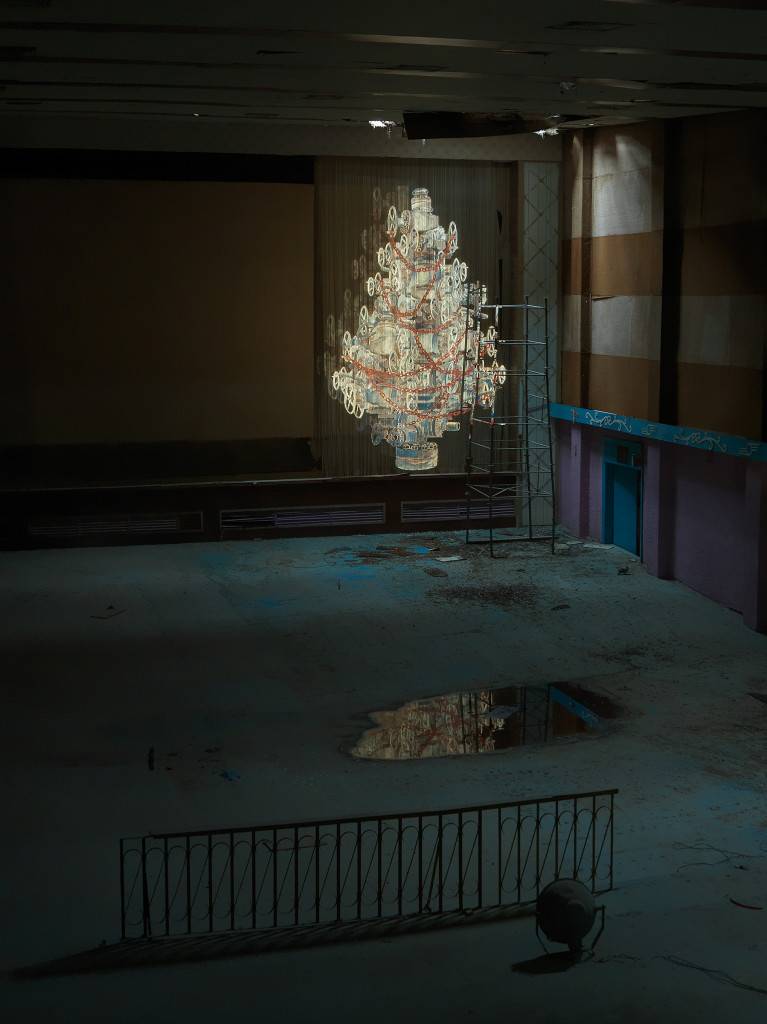Entitled Re:emerge – Towards a New Cultural Cartography, this year’s Sharjah Biennial inspired by the concept of the courtyard in Islamic architecture. Annabel Treon speaks with acclaimed Pakistani artist Shahzia Sikander about her site-specific installation.
Now in its 11th year, the Sharjah Biennial, organized by the Sharjah Art Foundation, has become an important platform for Contemporary artists in the Middle East. This year, curator Yuko Hasegawa (chief curator at the Museum of Contemporary Art Tokyo), drew inspired from the courtyards of Islamic architecture featuring works by more than 100 artists and architects, 27 of them from the Middle East.
Shahzia Sikander, who was recently honored by Hillary Clinton, with the first U.S. Department of State – Medal of Arts, was commissioned by Hasegawa to create site-specific work for this year’s biennial. One particular piece that lies close to Shahzia’s Pakistani heritage, is housed in a dilapidated cinema. “While visiting Sharjah in 2012 as part of the process of developing ideas for the Biennial, I toured the dilapidated cinema in Khorfakkan,” says Shahzia. “The building was full of character but in a state of decay, dying a slow death. The stagnating space felt like an anomaly to me amid the quick erection of buildings in the UAE.” Her piece was also inspired by a sole guard who she met during her visit, “[he] happened to be from Pakistan and had come to Sharjah as a laborer to help build the cinema in 1976. His story, though completely unexpected, ended up being woven into the work.” Entitled The Cypress despite its freedom is held captive by the garden, is taken from the poet Ghalib’s ghazal. “In the spirit of his poetry, which is multi-dimensional and full of many meanings, the use of the phrase is also meant to elicit a variety of interpretations,” she explains.
A reference to poetry is a key theme across Shahzia’s contributions. “Another work I’m doing for the Sharjah Biennial is a performance with local poets in a large public courtyard, where the performers engage with each other as well as with the public,” says Shahzia. “The poets use of language and recitation also juxtaposed with music composed for a three channel film, is the third part of my project.” The work is made with drawings and animation and focuses on Sharjah’s unique location at the Strait of Hormuz as well as the area’s historical power tensions as it previously lay in the imperial path.” Imbued within a poweful physical aesthetic, Shahzia’s work pays heed not only to her Pakhistani heritage, but to the developing UAE landscape.
The Sharjah Biennale runs until 13 May 2013. More information at www.sharjahart.org






















